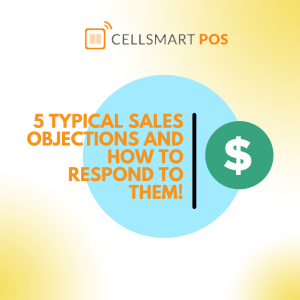Sales objections are quite typical in the retail industry, particularly for businesses selling expensive goods like electronics or furniture. Customers who are uncertain, disinterested, or not yet ready to buy are typically the ones that raise these arguments. You should respect customers’ decisions to put off making a purchase, but there may be times when you can steer them in the correct direction or complete the deal.
In this article, we’ll discuss some of the most typical arguments that stores may run against while trying to sell something to a customer. Check them out and see if you can use any of them in your store:
Prior to anything, read your customers and avoid being overbearing.
The advice provided here should help you come up with a strategy for handling customers complaints, but it’s crucial that you carefully consider each customer’s concerns before taking any action. For instance, it’s usually advisable to avoid the hard sale if a customer is in the “just looking around” stage. Applying these suggestions mindlessly and being forceful or dishonest will not work since there is no one strategy that works for all customers.
Having stated that, let’s examine the following concerns and talk about how to refute them:
First objection: “It’s too expensive.”
Probably the most frequent objection you’ll run against is a pricing issue. In this situation, you must first determine why they are worried about the price. Are they having problems appreciating the worth of the item or is it actually out of their price range? Is it because they believe they can find it somewhere for less money? Whatever the situation, determine it before beginning your pitch.
Perhaps you could explain how the product can save them money over time if they believe that the item is out of their price range. Will their energy bill be reduced? Will it eventually “pay for itself”?
If you want buyers to recognize a product’s value, you must identify unique advantages that would make the purchase price acceptable to the customers.
Second objection: “Isn’t it less expensive online?”
You can bring up the “hidden expenses” associated with internet purchases if you’re working with customers who believe they can find the same thing for less money online (or who are currently price-checking with their phones).
Third objection: “I should first talk to my significant other.“
In order to interact with them personally, learn about their worries, and clinch the deal, you should also try to persuade the customer to bring their spouse, parent, or employer with them. Attempting to get the other person on the phone may be helpful in some circumstances, but doing so might come off as aggressive or as if you are hurrying the customer.
Asking questions, evaluating the concern (e.g., do they actually need to confer with someone else or are they simply using the authority figure as an excuse?), and responding appropriately are the best ways to deal with such objections.
Fourth objection: “I’ve already had a negative encounter with this product or brand.”
Begin by expressing sympathy and apologies for the difficulty or issues the customer had. Instead of jumping to the defense right away, show the consumer some empathy.
Next, determine what the issue was. If it’s a problem you’re already aware of, you ought to be able to answer their questions or address their worries. You may, for instance, claim that the issue has been resolved in the most recent version of the product or suggest another brand that doesn’t have the same problem.
Additionally, it’s critical to persuade the customer that they won’t face the same issue again. Show them that their problems have been taken care of and include a guarantee to allay their fears.
Fifth objection: “I need to consider it.”
Don’t try to convince the buyer to change their mind or push the transaction when they raise the “I need to think about it” argument. Say “I understand” or “No problem” instead to acknowledge their reaction and put them at ease.
You might be able to seize the opportunity to either a) address underlying problems or b) give them a little prod in the correct way depending on how they respond. But to determine the best strategy, you’ll have to wing it.






